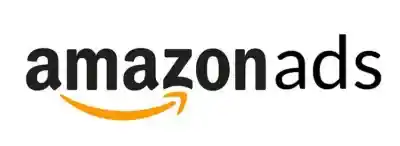CTV
Advertisers have increasingly shifted towards more data-driven video strategies, leading to the growing popularity of CTV. Connected TV advertising has become a key component of digital marketing strategies, aimed at reaching audiences consuming content via streaming services. CTV is a fusion of traditional television and streaming platforms, delivering content via internet-connected devices. Discover What CTV is and why CTV is vital for targeting audiences across smart TVs and streaming platforms. Learn how it’s reshaping digital marketing strategies for today’s advertisers.
CTV (Connected TV) marks a new era in digital advertising, combining the reach of traditional television with the flexibility of internet-connected streaming. CTV advertising refers to video ads delivered through streaming services while viewers consume content on their television sets. CTV devices allow viewers to connect to the internet for streaming content. It refers to any TV capable of connecting to the internet to stream digital content, offering advertisers powerful opportunities to deliver personalized, targeted video ads to engaged audiences. This includes a variety of streaming video content, such as movies and TV shows, available on platforms like Hulu and Netflix.
Introduction to CTV
Connected TV (CTV) refers to any TV set connected to the internet, enabling audiences to stream video content from various platforms, including streaming services like Netflix, Hulu, and Amazon Prime Video. CTV devices, such as smart TVs, gaming consoles, and streaming devices like Apple TV, Amazon Fire TV Stick, and Roku, have become increasingly popular, changing the way people watch TV. With CTV, viewers can watch their favorite shows and movies on demand, at any time, making it a highly attractive platform for advertisers. This shift in viewing habits allows advertisers to reach a more engaged audience, delivering personalized and targeted ads that resonate with viewers.
Furthermore, CTV Advertising operates on a real-time bidding basis, meaning advertisers bid programmatically for the available ad space in real time. This ensures that the most relevant ad is served to the viewer at the optimal time, maximizing both viewer relevance and advertiser return on investment.
What Is CTV?
CTV encompasses any television that can access the internet to deliver content beyond traditional broadcast or cable services. This includes Smart TVs from manufacturers like Samsung, Vizio, and LG, as well as standard TVs connected via streaming devices such as Apple TV, Chromecast, Roku, Fire TV, or even gaming consoles.
These connected devices act as a bridge between the internet and the television, delivering content through Over-the-Top (OTT) services. OTT platforms bypass cable providers, using apps to stream video directly to users via WiFi. This ecosystem mirrors the mobile app environment, offering a diverse range of on-demand video through applications installed on CTV devices. Regional affiliates manage their own advertising inventory and have autonomy over scheduling and programming.
CTV offers viewers unmatched flexibility in what they watch and when they watch it. For advertisers, it unlocks advanced capabilities for reaching target audiences with precision. Using programmatic advertising and real-time bidding, advertisers can serve personalized, data-driven ads to individual households—something traditional TV could never deliver. This allows campaigns to be more efficient, measurable, and results-oriented.
CTV merges traditional TV’s storytelling power with digital advertising’s targeting and analytics. It enables advertisers to maximize ROI by serving the most relevant message at the optimal moment. As more audiences migrate to streaming platforms, CTV is rapidly becoming a cornerstone of modern advertising strategy. Network affiliations play a crucial role in acquiring programming and advertising rights, further enhancing the reach and effectiveness of CTV.
How Does CTV Advertising Work?
CTV advertising involves placing video ads within streaming content viewed on internet-connected TVs. Ads are served before, during, or after shows or movies, similar to traditional TV spots. However, they are targeted using data like location, interests, or viewing behavior. Advanced audience segmentation is crucial for enhancing ad effectiveness by reaching specific demographics and creating tailored ads. Most CTV advertising is bought programmatically using real-time bidding. This allows advertisers to reach audiences more efficiently and at scale, with real-time optimization enabling dynamic budget adjustments during campaign execution.
CTV vs. OTT: What’s the Difference?
OTT (Over-the-Top) is the delivery method — content streamed over the internet without a traditional cable subscription. CTV refers to the device used to view OTT content, such as a Smart TV or a streaming device. All CTV is OTT, but not all OTT is CTV (since OTT can also be viewed on laptops, tablets, or phones). The two terms are closely related but not interchangeable. Understanding the distinction is crucial for campaign planning and targeting.
The shift from traditional TV to CTV advertising has revolutionized tv advertising by offering improved targeting, optimization, and measurement capabilities. CTV allows advertisers to reach cord cutters who have abandoned traditional cable for streaming services, enabling local advertisers to effectively target these demographics where they consume content online.
CTV vs Linear TV
Linear TV, also known as traditional TV, refers to the traditional broadcast model where content is aired at a specific time and viewers must watch it live or record it to view later. In contrast, CTV allows viewers to watch content on demand, at any time, and on any device with an internet connection. This shift in viewing habits has led to a significant increase in CTV ad spend, with many advertisers leveraging CTV advertising to reach their target audience. CTV campaigns offer precise targeting, high video completion rates, and detailed measurement, making it a more effective and efficient way to reach audiences compared to linear TV. Advertisers can now deliver their messages with pinpoint accuracy, ensuring that their ads are seen by the right people at the right time.
Benefits of CTV for Advertisers
CTV offers advertisers precision targeting with the reach of TV. Brands can deliver personalized messages to specific audience segments based on data. Post install events are crucial in measuring the effectiveness of CTV advertising, as they allow marketers to link app conversions and post-install events to CTV ads, demonstrating ROI and evaluating the customer journey.
It supports measurable outcomes like impressions, video completions, and even conversions. CTV ads typically appear in premium, brand-safe environments. It combines the storytelling power of video with digital-level analytics. Additionally, integrating a QR code in CTV ads can create interactive and direct-response ad experiences, significantly boosting engagement and sales.
Popular CTV Platforms and Devices
Connected TV content can be accessed through platforms like Roku, Amazon Fire TV, Apple TV, and Google Chromecast. A CTV app is crucial for measuring ad performance and user engagement. Game consoles such as Xbox and PlayStation also serve as CTV devices. Popular ad-supported streaming services include Hulu, Tubi, Pluto TV, and Sling TV. These platforms enable advertisers to reach viewers across a range of content types. Device diversity allows flexible campaign planning and broad audience access, effectively reaching a wide audience that includes cord-cutters and digital content consumers.
Audience Targeting Capabilities in CTV Advertising
CTV allows advertisers to go beyond traditional demographics through advanced audience segmentation, enhancing brand awareness and ad effectiveness. Targeting can be based on user behavior, interests, household data, and geographic location. Companies analyze their advertising performance in key markets to optimize their marketing strategies. Advanced contextual targeting places ads alongside relevant content genres or shows. Campaigns can also utilize first- and third-party data for higher precision. These capabilities make CTV a powerful tool for reaching the right viewer at the right time.
Programmatic Advertising in CTV
Programmatic advertising automates the media buying process across CTV platforms. Using DSPs, advertisers can bid on advertising inventory in real-time based on specific audience criteria. This enables greater efficiency, budget control, and campaign scalability. Programmatic platforms also provide transparency and real-time reporting. Real-time optimization plays a crucial role in enhancing performance metrics and campaign effectiveness by allowing advertisers to dynamically adjust budgets and allocate funds toward the most effective channels during campaign execution. It’s now the dominant method for buying CTV ad space.
High Video Completion Rates
One of the key advantages of CTV advertising is its high video completion rates. Unlike linear TV, where viewers can change channels or fast-forward through ads, CTV ads are often non-skippable, resulting in higher completion rates. This means that advertisers can be sure that their message is being seen by their target audience, making CTV a highly effective platform for brand awareness and reach. Additionally, CTV platforms provide detailed measurement and attribution, allowing advertisers to track the effectiveness of their campaigns and optimize their ad spend in real-time. This level of accountability and transparency is unmatched, making CTV a preferred choice for many brands.
CTV Ad Formats
CTV ad formats vary, including video ads, display ads, audio ads, and interactive ads. In-stream ads, which run within video content on websites and apps, are a popular format for CTV advertising. Advertisers can also use QR codes to link their ads to external websites or landing pages, allowing viewers to engage with their brand directly. With the rise of CTV, advertisers have more opportunities to reach their target audience with engaging and interactive ad formats, increasing the effectiveness of their campaigns. These diverse ad formats enable brands to create immersive experiences that capture viewers’ attention and drive engagement.
The CTV Ecosystem
The CTV ecosystem is complex, with multiple players involved, including streaming services, CTV devices, and advertisers. The ecosystem is highly fragmented, with many different platforms and devices available, making it challenging for advertisers to navigate. However, this fragmentation also provides opportunities for advertisers to reach their target audience across multiple platforms and devices. With the help of CTV platforms and ad channels, advertisers can manage their ad campaigns across multiple devices and platforms, ensuring that their message is seen by their target audience. As the CTV ecosystem continues to evolve, it is essential for advertisers to stay up-to-date with the latest trends and technologies to maximize their ad spend and reach their target audience effectively. This dynamic environment requires a strategic approach to leverage the full potential of CTV advertising.
Key Terms Related to CTV Streaming Services
OTT (Over-the-Top)
OTT refers to video content delivered via the internet, bypassing traditional cable or satellite providers, and is increasingly ‘watched’ by audiences on various digital platforms. As more viewers shift from traditional TV to streaming platforms, they are now ‘watching’ content more flexibly and frequently online, driving changes in media consumption and advertising strategies.
OTT platforms like Hulu, Netflix, and YouTube distribute content directly to users through streaming apps. CTV is a device that facilitates viewing OTT content on a television screen.
BVOD (Broadcaster Video on Demand)
BVOD is video-on-demand content provided by traditional broadcasters via online platforms, including a diverse array of content such as news programming, sports, and entertainment. News is a significant component of BVOD, playing a crucial role in both national and local broadcasting.
These typically include catch-up services like BBC iPlayer, 7plus, or ABC iView. BVOD is often ad-supported and maintains the editorial standards of legacy networks.
SVOD (Subscription Video on Demand)
SVOD platforms allow users to access a library of videos through a paid subscription, offering a variety of content such as movies and shows. For example, Netflix provides a successful SVOD platform with a vast array of original and licensed content. These services are usually ad-free and include platforms such as Netflix, Disney+, and Amazon Prime Video. Subscribers pay monthly or annually for unlimited access to available content.
AVOD (Ad-Supported Video on Demand)
AVOD platforms offer free access to video content, supported by advertising. Consumers watch video in exchange for viewing ads, much like traditional TV. AVOD platforms generate revenue through these advertisements, allowing them to offer content for free. Popular AVOD services include Tubi, Pluto TV, and YouTube.
FAST (Free Ad-Supported Streaming TV)
FAST platforms deliver live, scheduled programming over the internet, often mimicking traditional linear TV experiences, making them an effective advertising channel. These platforms are particularly effective in reaching a wide audience, including cord-cutters and digital content consumers. These channels are free to viewers and monetized entirely through ads. Examples include Samsung TV Plus, Xumo, and the free tiers of services like Peacock.
TVOD (Transactional Video on Demand)
TVOD allows users to rent or buy individual titles instead of subscribing to an entire platform. For example, services like iTunes or Google Play offer individual title purchases. TVOD services generate revenue through these individual title purchases, providing a flexible option for viewers who prefer not to commit to a subscription. Content is purchased on a per-title basis and is typically available for a limited viewing window. TVOD services include iTunes, Google Play, and Amazon Prime’s rental options.
« Back to Programmatic Glossary Index
Food Targeting Categories
Since 2008, Gourmet Ads has been the global leader in food-focused advertising, specializing in Contextual Targeting. Discover a wide range of Food Targeting Categories for your next advertising campaign or programmatic deals, including Alcohol, Beverage, Cuisine, Diet, Ingredient, Kitchen Appliances, Non-Endemic, Publisher, and Recipe Targeting. We ensure your brand resonates with an engaged, culinary-inclined audience, transforming advertising campaigns into deliciously successful endeavors. Experience Gourmet Ads—where your message meets the appetite of your desired market.
Let’s Get Started !
Let the Gourmet Ads team walk you through all the options available to ensure that your Food, Supermarket, Beverage or Kitchen advertising campaign has the best possible combination of Premium Guaranteed Inventory, Scale, First Party Data, Contextual Targeting and Programmatic Advertising elements.















